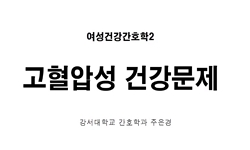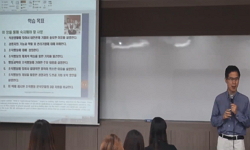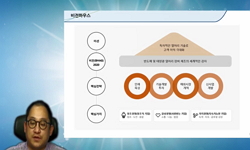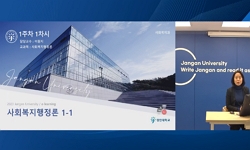본 연구는 간호학과 학생들의 간호학과 조직문화와 간호현장 조직문화에 대한 인식을 확인하고 조 직문화에 대한 인식이 성별, 학년별로 차이가 있는지를 확인하고자 시행되었다. 연구대...
http://chineseinput.net/에서 pinyin(병음)방식으로 중국어를 변환할 수 있습니다.
변환된 중국어를 복사하여 사용하시면 됩니다.
- 中文 을 입력하시려면 zhongwen을 입력하시고 space를누르시면됩니다.
- 北京 을 입력하시려면 beijing을 입력하시고 space를 누르시면 됩니다.

간호학과 학생의 간호학과 조직문화, 이상적 조직문화, 간호현장 조직문화 인식 차이 = A study on the perceptions of Nursing Students about Organizational culture of Nursing department, Ideal, and Nursing field
한글로보기https://www.riss.kr/link?id=A105234323
- 저자
- 발행기관
- 학술지명
- 권호사항
-
발행연도
2018
-
작성언어
-
- 주제어
-
KDC
300
-
등재정보
KCI등재
-
자료형태
학술저널
-
수록면
765-776(12쪽)
-
KCI 피인용횟수
1
- DOI식별코드
- 제공처
-
0
상세조회 -
0
다운로드
부가정보
국문 초록 (Abstract)
본 연구는 간호학과 학생들의 간호학과 조직문화와 간호현장 조직문화에 대한 인식을 확인하고 조
직문화에 대한 인식이 성별, 학년별로 차이가 있는지를 확인하고자 시행되었다. 연구대상은 일 간호
학과 전체학생 220명으로 2016년 10월 자료를 수집하고 SPSS 22.0을 사용하여 ANOVA, RM
ANOVA를 통해 분석하였다. 연구결과 간호학과는 발전문화가 가장 낮고(2.91±0.66) 위계, 합리문화
가 높아(3.82±0.60, 3.82±0.46) 통제지향적인 문화가 강한 것으로 나타났다. 반면 이상적으로 생각
하는 조직문화는 집단문화가 가장 높게 나타나(4.12±0.61) 현재 간호학과조직문화와 이상적으로 생
각하는 조직문화 간에 차이가 있었다. 간호현장조직문화에 대해서는 위계문화를 가장 높게
(4.00±0.59) 발전문화를 가장 낮게(3.20±0.71)인식하고 있었다. 또한 간호학생들은 간호학과문화에
대해 위계, 합리문화를 학년에 관계없이 계속적으로 높게 인식하고 있었으나 집단문화, 발전문화는
점점 낮아지는 것으로 나타났다(F=5.49, p<.000, F=1.26, p=0.29). 성별에 따른 조직문화 인식은 간호현
장 위계문화인식에서만 차이가 있고 나머지는 차이가 없었다. 이를 볼 때 통제중심의 간호학과조직문
화는 변화될 필요가 있으며 간호학과에서는 어떤 조직문화가 가장 바람지한지에 대한 추후 연구가
필요하다고 생각된다.
다국어 초록 (Multilingual Abstract)
The purpose of this study was to examine the perception of nursing students organizational culture of nursing department, nursing field, ideal culture, and to ascertain whether there is a difference in perception of organizational culture by sex an...
The purpose of this study was to examine the perception of nursing students organizational culture of
nursing department, nursing field, ideal culture, and to ascertain whether there is a difference in perception
of organizational culture by sex and grade. The subjects of this study were 220 students in the department
of day nursing and analyzed by ANOVA and RM ANOVA using SPSS 22.0. The results showed that the
developmental culture was the lowest (2.91±0.66), the hierarchical and rational culture was high (3.82±0.60,
3.82±0.46) in in nursing department. On the other hand, the perception of ideal organizational culture
showed group culture (4.12±0.61) was highest. Regarding nursing field, hierarchical culture was the
highest(4.00±0.59) and development culture was the lowest(3.20± 0.71). In addition, the nursing students
recognized the hierarchical and rational culture of nursing and culture continuously high regardless of grade,
but the group culture and the development culture were gradually lowered (F=5.49, p<.000, F=1.26,
p=0.29). The perception of organizational culture according to gender differed only in recognition of
hierarchical culture of nursing field and there was no difference in the rest. As a results of this study
control oriented culture was strong in nursing department. Further research is needed to find out what is
the most desirable type of organizational culture of nursing department.
목차 (Table of Contents)
- 1. 서론
- 2. 연구방법
- 3. 연구결과
- 4. 논의 및 제언
- 5. 결론 및 제언
- 1. 서론
- 2. 연구방법
- 3. 연구결과
- 4. 논의 및 제언
- 5. 결론 및 제언
- References
참고문헌 (Reference)
1 김호정, "행정조직문화가 조직몰입과 직무만족에 미치는 영향" 한국행정학회 36 (36): 87-105, 2002
2 이환범, "조직환경 및 조직구조가 권위주의 행태에 미치는 영향요인 분석" 한국정부학회 17 (17): 459-478, 2005
3 김정화, "임상간호사의 인간관계 갈등 경험" 질적연구학회 14 (14): 70-80, 2013
4 박현주, "일 간호대학생의 스트레스, 우울, 대처방법과 임상실습 만족도" 한국간호교육학회 16 (16): 14-23, 2010
5 윤선영, "병원 간호사 간 약자 괴롭힘 경험의 영향요인" 한국성인간호학회 26 (26): 553-562, 2014
6 김정덕, "문화성향과 다문화 감수성 관계 연구" 교육연구소 17 (17): 193-226, 2011
7 한병민, "공동주택 결로 발생 확률 예측에 관한 분석" 한국전시산업융합연구원 19 : 725-733, 2015
8 김태호, "공공봉사동기가 조직 구성원의 혁신행동에 미치는 영향에 관한 연구" 한국행정연구소 48 (48): 143-168, 2010
9 P. E. Spector, "Using self –report questionnaires in OB research: A comment on the use of a controversial method" 15 : 385-392, 1994
10 R. E. Quinn, "The transformation of organizational culture: A competing values perspective" Sage Publications 1985
1 김호정, "행정조직문화가 조직몰입과 직무만족에 미치는 영향" 한국행정학회 36 (36): 87-105, 2002
2 이환범, "조직환경 및 조직구조가 권위주의 행태에 미치는 영향요인 분석" 한국정부학회 17 (17): 459-478, 2005
3 김정화, "임상간호사의 인간관계 갈등 경험" 질적연구학회 14 (14): 70-80, 2013
4 박현주, "일 간호대학생의 스트레스, 우울, 대처방법과 임상실습 만족도" 한국간호교육학회 16 (16): 14-23, 2010
5 윤선영, "병원 간호사 간 약자 괴롭힘 경험의 영향요인" 한국성인간호학회 26 (26): 553-562, 2014
6 김정덕, "문화성향과 다문화 감수성 관계 연구" 교육연구소 17 (17): 193-226, 2011
7 한병민, "공동주택 결로 발생 확률 예측에 관한 분석" 한국전시산업융합연구원 19 : 725-733, 2015
8 김태호, "공공봉사동기가 조직 구성원의 혁신행동에 미치는 영향에 관한 연구" 한국행정연구소 48 (48): 143-168, 2010
9 P. E. Spector, "Using self –report questionnaires in OB research: A comment on the use of a controversial method" 15 : 385-392, 1994
10 R. E. Quinn, "The transformation of organizational culture: A competing values perspective" Sage Publications 1985
11 Korean Hospital Nurses Association, "The Study for Creation of the Positive Nursing Culture" Korean Hospital Nurses Association 2011
12 P. L. Berger, "The Social Construction of Reality" 1966
13 Y. H. Kim, "The Effects of Nursing Organizational Culture Type on Nurses' Job Satisfaction and Organizational Commitment" Daejeon Univ. 2004
14 J. S. Shim, "Study on organizational culture types of the nursing departments in hospitals and nurses'perception of the organizational activities" Kyunghee Unive. 2008
15 Korean Hospital Nurses Association(KHNA), "Research on Nursing Organizational Culture" Korean Hospital Nurses Association(KHNA) 2010
16 R. E Quinn, "Paradox, Planning and Perseverance : Guideline for Managerial Practice" Managing Organizational Transitions 295-313, 1984
17 D. S. Jung, "Organizational behavior" Samyoungsa 2006
18 E. Schein, "Organizational Culture and Leadership" Jossey-Bass 2010
19 R. Owens, "Organizational Behavior in Education" Prentice Hall Inc 2001
20 M. Hutchinson, "Integrating individual, work group and organizational factors: Testing a multidimensional model of bullying in the nursing workplace" 18 : 173-181, 2010
21 S. H. Lee, "Curriculum Evaluation" Yangsuwon 1992
22 M. Merviglia, "Creating a posit ive work environment. Implementation of the nurse-friendly hospital criteria" 39 (39): 64-70, 2009
23 D. Zapf, "Bullying and emotional abuse in the workplace:International perspectives in research and practice" Taylor & Francis 103-126, 2003
24 H. H. Kim, "An Empirical Study on Influential Factors of Public Service Motivation" Yonsei Univ. 2008
25 Korean Accreditation Board of Nursing Education, "Accreditation Standards of Nursing education"
26 K. S, Jang Kim, "A study on the relationship of the pattern of organizational effectivenss in Hospital" 1 : 125-143, 1996
27 B. I. Choi., "A study on the relationship between universities' organizational culture type and organizational effectiveness" Youngnam Univ. 2010
28 S. J. Han, "A Study on the relationship between nursing organizational culture and organizational performance" 3 (3): 441-456, 2002
29 G. T. Go, "A Study on the influences of Organizational Culture Recognition and Personal Characteristic on Public Service Motivation : Focusing on Local Public Service Employee" Seoul National University 2013
30 A. K. Samnani, "20 Years of workplace bullying research: A review of the antecedents and consequences of bullying in the workplace" 17 : 581-589, 2012
동일학술지(권/호) 다른 논문
-
5세 누리과정 교사용 지도서 분석: 대·소집단 활동의 영역별 분포를 중심으로
- 인문사회과학기술융합학회
- 채미영(Mi Young Chae)
- 2018
- KCI등재
-
IT 융합을 통한 3D 지리 교구 제작과 증강현실 앱 개발
- 인문사회과학기술융합학회
- 임충현(Chunghyun Lim)
- 2018
- KCI등재
-
- 인문사회과학기술융합학회
- 김수철(Soo-Cheol Kim)
- 2018
- KCI등재
-
기숙사 대학생을 위한 집단미술치료 적용 및 효과 - 대학생활 적응 및 주관적 생활만족을 중심으로 -
- 인문사회과학기술융합학회
- 한유진(You-Jin Han)
- 2018
- KCI등재
분석정보
인용정보 인용지수 설명보기
학술지 이력
| 연월일 | 이력구분 | 이력상세 | 등재구분 |
|---|---|---|---|
| 2020 | 평가예정 | 신규평가 신청대상 (신규평가) | |
| 2019-12-01 | 평가 | 등재 탈락 (기타) | |
| 2019-01-01 | 평가 | 등재학술지 유지 (계속평가) |  |
| 2016-01-01 | 평가 | 등재학술지 선정 (계속평가) |  |
| 2014-01-01 | 평가 | 등재후보학술지 선정 (신규평가) |  |
학술지 인용정보
| 기준연도 | WOS-KCI 통합IF(2년) | KCIF(2년) | KCIF(3년) |
|---|---|---|---|
| 2016 | 0.33 | 0.33 | 0.32 |
| KCIF(4년) | KCIF(5년) | 중심성지수(3년) | 즉시성지수 |
| 0.33 | 0.32 | 0.407 | 0.14 |





 KCI
KCI 스콜라
스콜라






